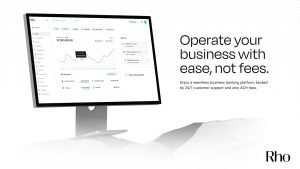Partner Content: Glimpse
Every CPG founder has a deduction horror story. A $30,000 invoice magically turns into a $17,000 deposit, random charges for spoiled product with no proof, and a late delivery fee when the carrier was stuck in the warehouse’s own backlog. It’s enough to make you question reality.
But the truth is more mundane and more frustrating: deductions are simply part of doing business with big-box retailers and distributors. And unless you’re actively validating and disputing them, you’re leaking margin—probably more than you think.
Anthony Chang at Glimpse recently broke down exactly why deductions matter, how they impact small brands, and what founders can do to protect their revenue.
The Hidden Cost of Growth
As Anthony put it, “Every dollar matters.” Especially in the early stages, your trade spend is one of the largest line items on your P&L, right behind salaries and COGS. And yet, a staggering amount of that spend gets siphoned away through deductions, many of which are invalid.
For new brands, it’s not uncommon to see 50% of invoices deducted in the first 6–12 months. For more established brands, deductions still average 20–25%, and that’s before you account for things like freight, spoilage, or post-audit surprises. Worse, most deductions are processed through a labyrinth of portals, documents, and ambiguous codes. It can feel impossible to know what’s valid unless you’re tracking every line item.
Not All Deductions Are Created Equal
Not every deduction is problematic. In fact, most of them are technically valid, like slotting fees, promotional scans, off-invoice discounts, and merchandising support. These are negotiated between brand and retailer and (ideally) tracked through your trade calendar.
But freight deductions? Product shortages? Late deliveries? These are a different beast.
“These are some of the most invalid—and most common—deductions we see,” Anthony explained. “They’re often due to warehouse errors, mislabeling, or receiving delays. But they get charged to you, not the retailer. And because there’s no one checking, they get away with it.”
At BodyArmor, where Anthony previously led deduction management, the team saw $7.6 million in product shortage deductions in a single year. They clawed back $7 million, largely by compiling the right documentation and refusing to accept bad data.
The Paper Trail Pays Off
The key to fighting deductions is simple: receipts. Different types of deductions require different documentation. To dispute a deduction successfully, you’ll need documents like:
- A bill of lading signed by the carrier upon delivery
- The PO packing slip or shipping confirmation
- Clear product and scan info tied to the deduction
- Internal promo calendars and trade agreements
It’s not glamorous. But it works. “If you can prove the product was delivered as expected, or that the promo was executed correctly, you win,” Anthony said.
But assembling that paper trail manually, especially across Amazon, UNFI, Target, and other portals, is a full-time job. And most brands don’t have time for it.
Glimpse Makes Fighting Deductions Easy
Glimpse is an AI-powered deductions management platform that automates the validation and recovery process for you. It automatically pulls in deduction data and backups across retailers, validates every charge against the right internal brand documents, and even disputes on your behalf including follow-up all the way until repayment.
This helps brands win back more money, without dedicating hours (or headcount) to the fight.
“We cut 20–25 hours per month from clients’ workflows,” Anthony said. “And we only charge a commission on what we actually recover.”
Their model is simple:
- A low monthly platform fee
- A success-based commission on new deduction recoveries
- No commission on what you’ve already recouped
And it works. One brand saw $50,000 in recovery and saved $60,000 in accounting costs within nine months, essentially a 33X ROI. Another founder discovered $2,500 in recoverable deductions that Glimpse got them during the trial period alone.
Glimpse works with brands ranging from early-stage (>$1M in revenue) to mid-market players doing $10M+, as well as larger enterprises starting to come onboard. The question isn’t really about size, it’s about pain that scales with your retail expansion. If deduction management is draining your team’s time, or if you’re leaving money on the table, it may be time to automate.
And if you’re not sure? They’ll run a free audit for you. Because the truth is, deductions aren’t going away. But they don’t have to go unchallenged.






